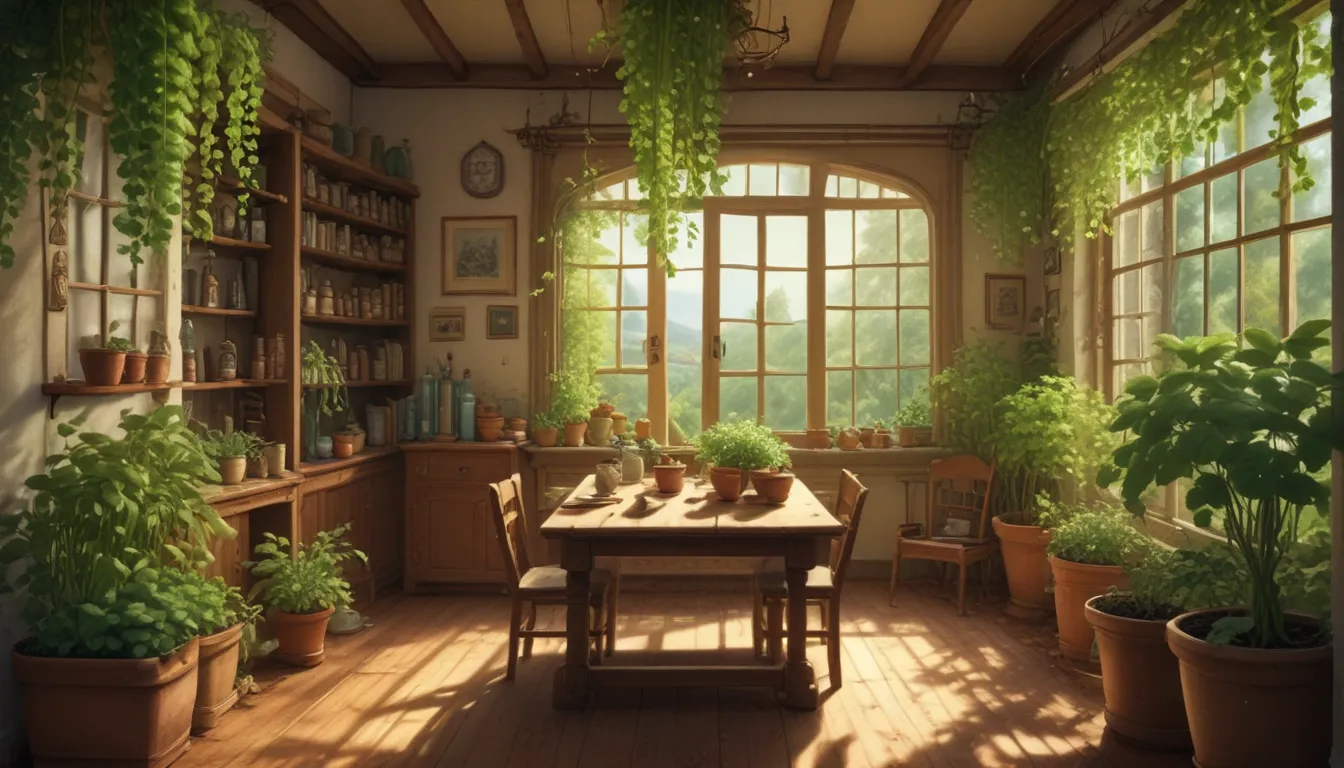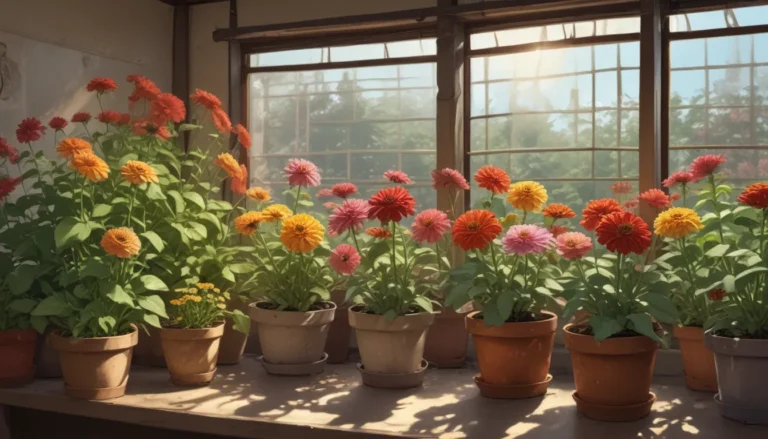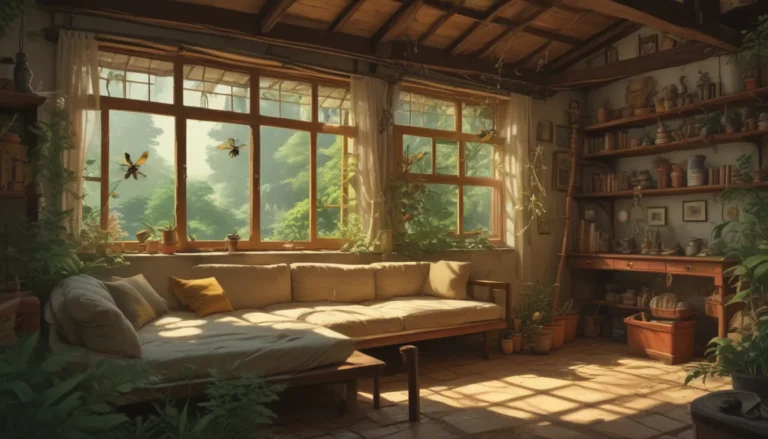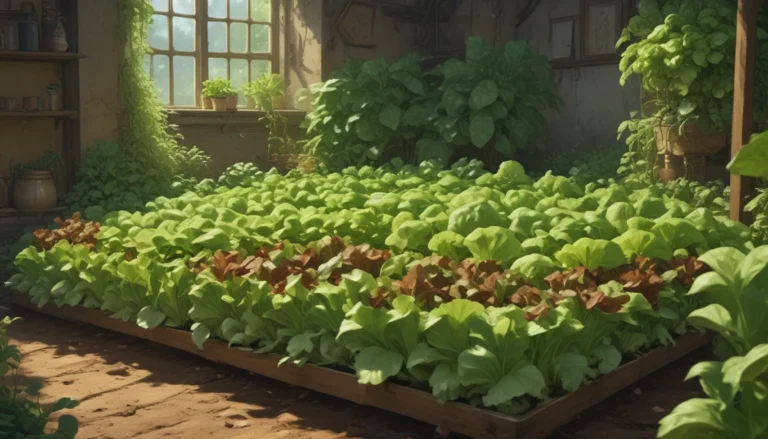Tips for Successfully Growing Peas Indoors

Peas, from the Pisum sativum family, are a wonderful cool-weather crop that can be grown indoors. Whether you’re in USDA Hardiness Zones 3 to 11, peas can thrive in the comfort of your home.
In this comprehensive article, we will explore everything you need to know about successfully growing peas indoors. From choosing the right cultivars to harvesting and preserving your crop, we’ve got you covered. Let’s dive in and discover the world of indoor pea cultivation!
All About Peas
Peas are part of the Fabaceae family, also known as the legume family. These nutrient-packed veggies are not only delicious to eat but also fascinating to grow.
- Annual Plants: Peas are annual plants that complete their lifecycle in a single season. This means you can enjoy a bountiful harvest in a relatively short amount of time.
- Nitrogen Fixers: Pea plants are known as “nitrogen fixers” because they have a symbiotic relationship with bacteria that help convert atmospheric nitrogen into plant food. This makes them beneficial to the soil and surrounding plants.
- Self-Pollinating: Peas are self-fertile plants, meaning they can pollinate themselves without the need for bees or other insects. They rely on the wind to move the pollen around for pollination.
There are different types of peas, including garden peas, snow peas, and sugar snap peas. Each variety has its unique characteristics and flavor profiles, making them a versatile addition to your indoor garden.
Before we proceed with growing peas indoors, it’s essential to note that sweet peas, from the Lathyrus odoratus species, are ornamental plants and not edible. Be sure to read seed packets carefully to avoid any confusion.
Getting Started with Indoor Pea Cultivation
To successfully grow peas indoors, you’ll need to create the right environment for them to thrive. Here’s a step-by-step guide to getting started:
Light Requirements
- Peas require at least eight hours of sunlight per day. If you have a south-facing window, you can place your pots near it.
- To avoid leaf scorch from intense sunlight, monitor your plants closely and adjust their position if needed.
- Alternatively, you can use an LED grow light to provide the necessary light for your pea plants. Aim for 10 to 12 hours of light per day, adjusting the height of the light as the plants grow.
Temperature and Airflow
- Maintain a room temperature between 60 and 70°F for optimal pea growth.
- Avoid placing your pots near HVAC registers or drafty areas that may cause temperature fluctuations.
- Allow for proper airflow between pots to prevent moisture buildup around your plants.
Choosing the Right Container
- Select a well-draining container that is 8 to 12 inches deep. Peas have shallow roots, so a deep container is not necessary.
- If you’re growing pea sprouts or microgreens, a shallow pan with holes punched in the bottom will suffice.
- Ensure your container is large enough to accommodate mature pea plants to avoid the need for transplanting.
Soil and Fertilizer
- Fill your container with high-quality, moisture-retentive potting soil. Look for a pH level of 5.8 to 7.0, which replicates ideal outdoor growing conditions.
- While peas generally do not require fertilization in the garden, indoor container-grown plants may benefit from a low-nitrogen granular fertilizer or diluted liquid houseplant food for optimal growth.
Now that you’ve prepared your indoor pea growing space let’s move on to the next step – planting your peas!
Planting and Growing Peas Indoors
Planting Process
- Sanitize your container with a 10% bleach solution before planting to prevent the spread of disease.
- Sow your pea seeds 1 to 1.5 inches deep and space them 1.5 to 3 inches apart. For sprouted seeds, point the shoot upwards for optimal growth.
- Maintain even moisture in the soil without overwatering to ensure healthy seedling development.
Growing Tips
- Provide bright natural or LED light for 10 to 12 hours daily to replicate full sun conditions.
- Use a well-draining pot that is large enough to accommodate mature pea plants.
- Rotate the pot a quarter turn every few days to ensure all foliage receives adequate light and support pollination.
With these tips in mind, you’re well on your way to successful indoor pea cultivation. But which cultivars should you choose for your indoor garden?
Cultivar Selection for Indoor Pea Growing
When selecting pea cultivars for indoor cultivation, look for compact varieties that are well-suited for container gardening. Here are three cultivars to consider:
Oregon Sugar Pod II
- Flat, stringless pods with a 60-day maturity period.
- Available seeds from Botanical Interests.
Patio Pride
- Sugar snap type with edible pods measuring 2 to 3 inches.
- Quick maturity in just 40 days.
- Available seeds from True Leaf Market.
Tom Thumb
- A compact variety reaching approximately 12 inches in height.
- Features tender pods that can be enjoyed fresh.
- Organic seeds available from True Leaf Market.
These cultivars offer a range of flavors and textures, making them perfect for indoor pea cultivation. Choose based on your preferences and space constraints to create a thriving indoor pea garden.
Pest and Disease Management
While growing peas indoors reduces the risk of pests and diseases, it’s essential to be vigilant and monitor your plants regularly. Common pests that may affect peas include aphids, armyworms, and spider mites. Diseases such as damping off and powdery mildew can also impact plant health.
To manage these issues, consider using organic neem oil or other natural treatments to control pests and diseases effectively. Regular monitoring and prompt action can help prevent serious plant damage and ensure a healthy indoor growing environment.
Harvesting and Preserving Your Peas
Knowing when and how to harvest your peas is essential to enjoying a bountiful crop. Pea pods are ready for harvest when they reach 2 to 3 inches in length, ensuring optimal flavor and tenderness.
To preserve your peas, store shelled garden peas in the refrigerator for up to one week. Snow and sugar snap peas should be consumed within three days for optimal freshness. If you have a surplus of peas, freezing is an excellent option for long-term storage.
Follow these simple steps to freeze your peas:
1. Wash and prepare the peas by removing stems and strings.
2. Blanch the peas in boiling water for 1 to 1.5 minutes, then transfer to ice water to cool.
3. Dry the peas and pack them into zippered plastic bags, removing excess air before sealing.
4. Freeze the peas and use them within one year for the best quality.
Whether you enjoy your peas fresh or preserved, they make a delightful addition to a variety of dishes and cuisines.
Delicious Pea Recipes to Try
Peas are incredibly versatile and can be used in a wide range of recipes. From salads to pasta dishes, peas add a burst of flavor and nutrition to your meals. Here are a few recipe ideas to inspire your culinary creations:
- Asparagus and Snow Pea Salad with Black-Eyed Peas: A delightful salad featuring the crunch of snow peas and the creaminess of black-eyed peas.
- Gluten-free Brown Rice Salad with Apples, Dried Cranberries, and Peas: A refreshing and flavorful salad packed with sweet garden peas.
- Fresh Pesto Pasta Salad with Green Peas: A light and vibrant pasta dish featuring shelled garden peas and snap or snow pods for added texture.
Get creative in the kitchen and experiment with different ways to incorporate peas into your favorite dishes for a nutritious and tasty meal experience.
Quick Reference Growing Guide
Plant Type:
- Annual legume
Flower/Foliage Color:
- Pink, purple, white/green
Native to:
- Asia, Europe
Water Needs:
- Moderate
Hardiness (USDA Zone):
- 3-11 (outdoors)
Maintenance:
- Moderate
Exposure:
- Bright direct to indirect sunlight, grow light
Soil Type:
- Moisture-retentive potting soil
Time to Maturity:
- 50-70 days
Soil pH:
- 5.8-7.0
Spacing:
- 1.5-3 inches (seeds)
Soil Drainage:
- Well-draining
Planting Depth:
- 1-1.5 inches (seeds)
Height:
- 18-30 inches (bush type), pole type (vining) 4 to 6 feet
Spread:
- 18-30 inches
Common Pests and Diseases:
- Aphids, armyworms, cutworms, leafhoppers, pea weevils, spider mites; damping off, powdery mildew
With this quick reference guide, you can easily navigate the growing process and ensure the success of your indoor pea garden.
Final Thoughts
Growing peas indoors can be a rewarding and fulfilling experience. The joy of harvesting fresh peas right from your home is unmatched, providing a sense of accomplishment and connection to nature.
Whether you’re a seasoned gardener or a beginner looking to explore indoor cultivation, peas are a fantastic choice for your indoor garden. With the right knowledge and care, you can enjoy a thriving pea crop throughout the year.
Are you ready to start growing peas indoors? Share your thoughts and experiences in the comments below. Your insights may inspire others to embark on their indoor gardening journey with peas as their star crop.
For more information on peas and gardening tips, be sure to explore our additional resources and articles for valuable insights and inspiration.
Happy gardening and may your indoor pea garden flourish with abundance and flavor!





